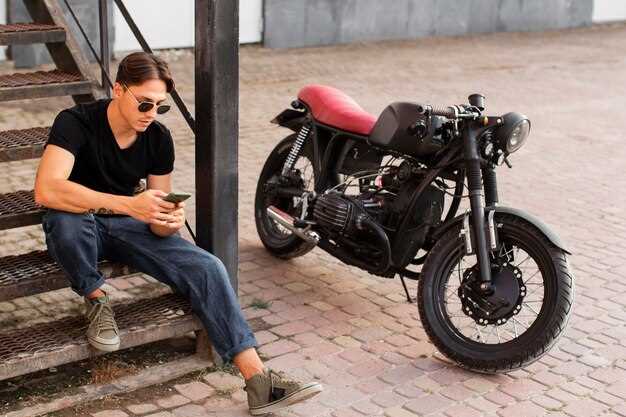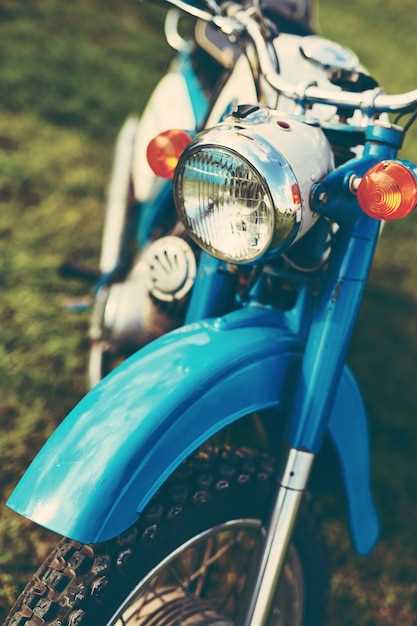
Storing your classic motorcycle properly is essential to preserving its value and performance. Classic bikes, with their unique designs and intricate parts, require special attention when it comes to storage. Inappropriate storage can lead to damage, making your beloved motorcycle less enjoyable to ride and potentially costing you a fortune in repairs.
When considering storage options for your classic bike, one must think about factors such as temperature, humidity, and safety. Keeping your motorcycle in an environment that protects it from the elements will not only prolong its lifespan but also maintain its aesthetic appeal. Inadequate storage can result in rust, corrosion, and degradation of mechanical components, which can detract from the riding experience.
To ensure your motorcycle remains in top condition, it’s crucial to follow specific storage tips tailored to classic bikes. From using proper covers to selecting suitable storage locations, each detail plays a significant role. By taking the time to understand and implement these strategies, you can keep your classic motorcycle safe, secure, and ready for the next ride.
Choosing the Right Environment for Your Classic Bike

When it comes to proper storage of your classic bike, the environment plays a crucial role in its longevity and condition. Selecting the right space can prevent deterioration and protect your investment from unforeseen damage.
Firstly, ensure that the storage area is dry and well-ventilated. Humidity can lead to rust and corrosion on the bike’s metal parts, while stagnant air can contribute to the growth of mold and mildew. Using a dehumidifier can be beneficial in maintaining optimal moisture levels.
Temperature control is also important. Ideally, the storage environment should be kept at a stable temperature, away from extreme heat or cold. Fluctuations in temperature can cause various materials on your classic bike, such as rubber and plastic components, to degrade over time.
Natural light can be detrimental to your motorcycle’s finish. Excessive exposure to sunlight can cause paint to fade and plastics to become brittle. Therefore, it is advisable to store your bike in a shaded area or use a cover that protects against UV rays if your storage space is not fully enclosed.
Additionally, ensure that the bike is stored on a level surface. This prevents any accidental tipping and protects the tires from flat spots. A quality motorcycle stand can provide additional stability and keep weight off the tires during long-term storage.
Last but not least, consider security features in your storage environment. It is vital to protect your classic bike from theft or vandalism. Investing in a secure lock system and, if possible, storing the bike in a monitored facility can offer peace of mind.
Preparing Your Motorcycle for Long-Term Storage

When it comes to storing your classic motorcycle, proper preparation is key to ensuring its longevity and performance. The following steps will help you get your bike ready for an extended period without use.
Clean Your Motorcycle: Before storage, thoroughly clean your bike. Remove dirt, grime, and any corrosive substances to prevent rust and damage during the storage period. Pay special attention to sensitive areas like the engine, undercarriage, and wheels.
Change the Oil: Old oil can contain contaminants that may harm your engine. Perform an oil change and replace the oil filter to keep your motorcycle in optimal condition. This will ensure that your engine is lubricated well during its time in storage.
Fuel System Maintenance: Fill the tank with fuel to prevent moisture accumulation. Add a fuel stabilizer to keep the gasoline from deteriorating. This will help ensure your motorcycle starts smoothly when you’re ready to ride again.
Battery Care: Disconnect the battery and store it in a dry, cool place. Consider using a battery maintainer to keep it charged. If possible, remove the battery from the bike to avoid potential corrosion.
Tires and Wheels: To prevent flat spots, either remove the tires from the bike or use a motorcycle stand. If that’s not feasible, inflate the tires to their recommended pressure and move the motorcycle occasionally, if possible.
Protecting the Exterior: Apply a coat of wax to the motorcycle’s surface to protect the paint and chrome from dust and moisture. Use a breathable cover to shield your bike from dust while allowing air circulation to prevent moisture buildup.
Inspections and Regular Check-Ups: Periodically check on your motorcycle during storage. Look for any signs of leaks, corrosion, or pests. This will help identify any issues early, allowing you to address them before taking your bike out for a ride.
By following these essential steps, you will ensure that your classic motorcycle remains in prime condition, ready for your next adventure when you return from storage.
Essential Maintenance Steps After Storage Period
After a prolonged storage period, it is crucial to perform several maintenance steps to ensure your classic motorcycle is ready for the road. Start by inspecting the battery; charge it fully or replace it if necessary. Next, check all fluid levels, including engine oil, coolant, and brake fluid. Replace any fluids that appear dirty or have degraded over time.
Inspect the tires for any signs of damage or flat spots. Inflate them to the recommended pressure and check for any cracks in the rubber. It is advisable to clean the tires thoroughly, removing any debris that may have accumulated during storage.
Conduct a thorough visual inspection of the entire motorcycle. Look for any signs of corrosion or rust, particularly on metal surfaces. If rust is found, treat it appropriately to prevent further deterioration. Additionally, examine the chain and sprockets, lubricating them if necessary to ensure smooth operation.
Check the brake system by inspecting both the front and rear brakes. Ensure the brake pads are in good condition and that the brake lines are free from leaks. Test the brake lever and pedal for proper function.
Lastly, take the time to inspect all lights and electrical components. Replace any burnt-out bulbs and ensure that all wiring is intact. Once these maintenance steps are completed, your classic motorcycle will be ready to hit the road safely and enjoyably.
